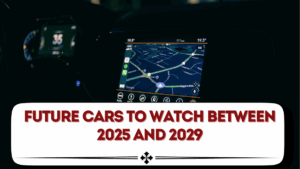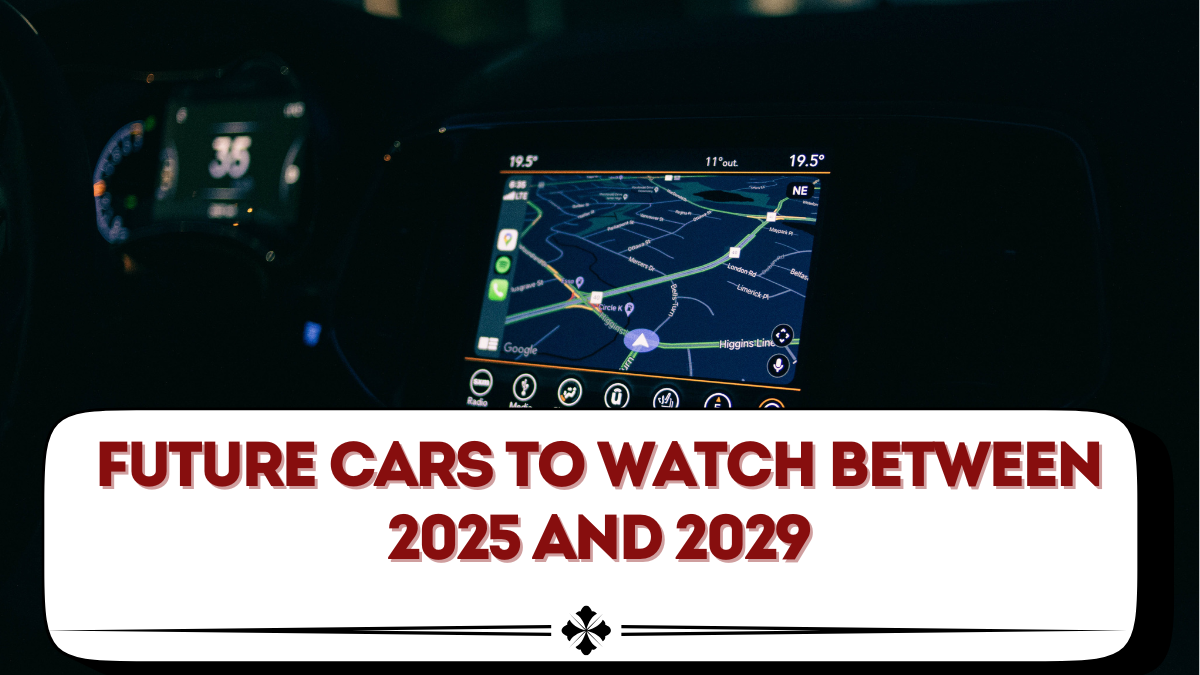The automobile industry is at the edge of one of its biggest revolutions. Between 2025 and 2029, future cars 2025–2029 will represent a bold mix of electric innovation, hybrid efficiency, and futuristic concept vehicles. Automakers are pushing the boundaries of design, speed, sustainability, and artificial intelligence. These cars are not just vehicles; they are lifestyle experiences, offering advanced connectivity, autonomy, and eco-friendly performance.
For buyers, the upcoming five years will bring vehicles that are more diverse than ever. From affordable electric hatchbacks to luxury hypercars, from AI-driven shuttles to hydrogen-powered sedans, the choices will transform the way we think about driving.

The Shift Toward Electrification
Electrification remains the dominant trend shaping the automotive industry. By 2029, EVs could make up nearly 50% of global new car sales. Automakers are racing to build affordable, long-range, and high-performance electric cars that meet the needs of every market segment.
Expected EV milestones between 2025 and 2029:
-
Driving ranges of up to 1,000 km in flagship models.
-
Widespread ultra-fast charging infrastructure with 15-minute top-ups.
-
Vehicle-to-grid (V2G) technology allowing cars to power homes.
-
Wireless charging adoption in premium models.
-
Affordable EVs under $20,000 entering emerging markets.
Tesla, BYD, Mercedes-Benz, Hyundai, and Tata Motors are among the brands leading this transformation.
Future Cars to Watch (2025–2029)
The lineup of future cars 2025–2029 is both exciting and diverse.
-
Tesla Roadster (2025) – Known for blistering acceleration under 2 seconds and 1,000+ km range.
-
Apple Car (2026–2027 projected) – Focused on AI-driven design and seamless integration with Apple ecosystems.
-
Mercedes EQXX (2026) – A groundbreaking efficiency-focused EV with futuristic interiors.
-
Toyota Solid-State EV (2027) – Could become the first mainstream solid-state battery car.
-
Rimac Hyper-EV (2028) – A hypercar blending electric torque with extreme aerodynamics.
-
Tata Affordable EV Series (2029) – Designed for budget buyers in India and other emerging markets.
Hybrid Cars Remain Relevant
Despite the EV wave, hybrids will remain critical in areas where charging infrastructure is still limited. Between 2025 and 2029, expect advanced plug-in hybrids (PHEVs) and mild hybrids offering better performance and efficiency.
Examples include:
-
Next-generation Honda Clarity PHEV with over 100 km electric-only range.
-
Ford Hybrid SUVs combining family practicality with lower emissions.
-
Luxury hybrid sedans offering seamless transitions between petrol and electric power.
Hybrids will act as the bridge between full combustion cars and EV dominance, especially in rural and developing markets.
Rise of Autonomous and AI-Powered Cars
Autonomy and artificial intelligence will be a defining factor in the future car market. By 2029, Level 4 autonomous vehicles are expected to see limited adoption in urban areas. These cars will rely on AI for navigation, decision-making, and communication with road infrastructure.
Key innovations to expect:
-
AI copilots for route planning, entertainment, and safety alerts.
-
Fleet-level driverless taxis from companies like Waymo, Tesla, and Baidu.
-
Vehicle-to-vehicle communication reducing traffic congestion.
-
Advanced driver monitoring to ensure safety in semi-autonomous settings.
-
Integration of 5G and upcoming 6G for real-time data processing.
Comparison of Future Car Categories
| Category | Features | Timeline | Impact on Buyers |
|---|---|---|---|
| Next-Gen EVs | Long ranges, fast charging, wireless power | 2025–2029 | Mainstream adoption |
| Hybrids | Fuel + electric power, extended range | 2025–2027 | Transitional tech |
| Hypercars | Extreme acceleration, futuristic design | 2026–2029 | Niche luxury appeal |
| Autonomous Cars | AI-driven, semi/full driverless | 2027–2029 | Urban mobility revolution |
| Affordable EVs | Budget-friendly, practical | 2028–2029 | Wider global accessibility |
This table shows that whether you are a budget buyer or a hypercar enthusiast, the market will have something new to offer.
Design and Lifestyle Features
Future cars are evolving into mobile living spaces. Interiors are being redesigned with AR dashboards, panoramic smart glass, reclining massage seats, and AI personalization. Cars will adjust lighting, music, and temperature automatically to suit passenger preferences.
Design highlights expected:
-
Minimalist interiors with touch and voice controls.
-
Biometric entry replacing traditional keys.
-
AR windshields showing navigation directly on the road view.
-
Foldable seating for family or workspace use.
These features emphasize that cars between 2025 and 2029 will be much more than transportation—they will be lifestyle hubs.
Challenges Ahead
Despite the excitement, future cars face several obstacles that need to be addressed before full adoption.
-
High initial manufacturing and purchase costs.
-
Charging infrastructure gaps in rural and developing regions.
-
Battery recycling and sustainability concerns.
-
Consumer trust issues with fully autonomous driving.
-
Global supply chain disruptions affecting semiconductor availability.
Overcoming these challenges will require collaboration between governments, automakers, and technology companies.
FAQs
What is the biggest trend in cars between 2025 and 2029?
Electrification is the key trend, with EVs becoming mainstream and supported by innovations like solid-state batteries.
Will hybrids still be important by 2029?
Yes, hybrids will remain relevant where charging infrastructure is lacking, acting as a bridge toward full electrification.
Which future car is most anticipated in 2025?
The Tesla Roadster is one of the most anticipated, promising extreme acceleration and long-range capability.
Will autonomous cars be common by 2029?
Level 4 autonomous vehicles will see limited rollout in major cities, but full autonomy (Level 5) is still years away.
Are affordable EVs expected by 2029?
Yes, several automakers like Tata and BYD are planning EVs priced under $20,000 for emerging markets.
Conclusion
The future cars 2025–2029 highlight a decade of innovation and transformation. Electric vehicles will dominate sales, hybrids will remain vital in transitional markets, and autonomous technology will begin shaping mobility in cities. From Tesla’s Roadster to Toyota’s solid-state EVs and Rimac’s hypercars, every segment of the market will experience a shift. Cars will no longer just be about driving—they will become smart, connected, and sustainable lifestyle companions. For buyers, the next five years promise unmatched variety, cutting-edge technology, and a glimpse of the future of mobility.
Click here to know more.
